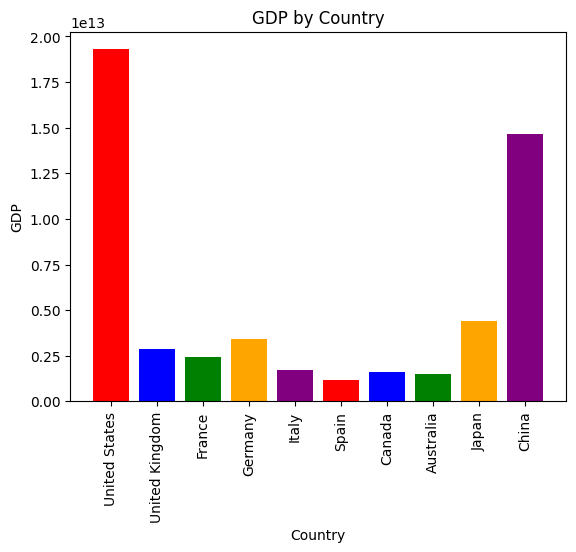Pandas AI is a Python library that adds generative artificial intelligence capabilities to Pandas, the popular data analysis and manipulation tool. It is designed to be used in conjunction with Pandas, and is not a replacement for it.
Try out PandasAI in your browser:
pip install pandasaiDisclaimer: GDP data was collected from this source, published by World Development Indicators - World Bank (2022.05.26) and collected at National accounts data - World Bank / OECD. It relates to the year of 2020. Happiness indexes were extracted from the World Happiness Report. Another useful link.
PandasAI is designed to be used in conjunction with Pandas. It makes Pandas conversational, allowing you to ask questions about your data and get answers back, in the form of Pandas DataFrames. For example, you can ask PandasAI to find all the rows in a DataFrame where the value of a column is greater than 5, and it will return a DataFrame containing only those rows:
import pandas as pd
from pandasai import PandasAI
# Sample DataFrame
df = pd.DataFrame({
"country": ["United States", "United Kingdom", "France", "Germany", "Italy", "Spain", "Canada", "Australia", "Japan", "China"],
"gdp": [19294482071552, 2891615567872, 2411255037952, 3435817336832, 1745433788416, 1181205135360, 1607402389504, 1490967855104, 4380756541440, 14631844184064],
"happiness_index": [6.94, 7.16, 6.66, 7.07, 6.38, 6.4, 7.23, 7.22, 5.87, 5.12]
})
# Instantiate a LLM
from pandasai.llm.openai import OpenAI
llm = OpenAI()
pandas_ai = PandasAI(llm)
pandas_ai.run(df, prompt='Which are the 5 happiest countries?')The above code will return the following:
6 Canada
7 Australia
1 United Kingdom
3 Germany
0 United States
Name: country, dtype: object
Of course, you can also ask PandasAI to perform more complex queries. For example, you can ask PandasAI to find the sum of the GDPs of the 2 unhappiest countries:
pandas_ai.run(df, prompt='What is the sum of the GDPs of the 2 unhappiest countries?')The above code will return the following:
19012600725504
You can also ask PandasAI to draw a graph:
pandas_ai.run(
df,
"Plot the histogram of countries showing for each the gpd, using different colors for each bar",
)You can find more examples in the examples directory.
In order to set the API key for the LLM (Hugging Face Hub, OpenAI), you need to set the appropriate environment variables. You can do this by copying the .env.example file to .env:
cp .env.example .envThen, edit the .env file and set the appropriate values.
As an alternative, you can also pass the environment variables directly to the constructor of the LLM:
# OpenAI
llm = OpenAI(api_token="YOUR_OPENAI_API_KEY")
# Starcoder
llm = Starcoder(api_token="YOUR_HF_API_KEY")PandasAI is licensed under the MIT License. See the LICENSE file for more details.
Contributions are welcome! Please check out the todos below, and feel free to open a pull request. For more information, please see the contributing guidelines.
After installing the virtual environment, please remember to install pre-commit to be compliant with our standards:
pre-commit install- Add support for more LLMs
- Make PandasAI available from a CLI
- Create a web interface for PandasAI
- Add unit tests
- Add contributing guidelines
- Add CI
- Add support for conversational responses




